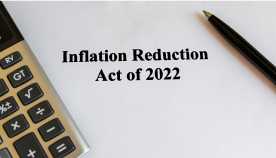AARP Eye Center
AARP Arizona Opposes Proposed Utility Rate Jump
Carol Knapp already sets the air conditioner at her Casa Grande home at 80 degrees, trying to save money on her electric bill. If a 13.6 percent rate hike goes forward as proposed by Arizona Public Service, the retired teacher envisions bumping the thermostat even higher.
“Costs just keeping going up and up and up for gas, food, everything,” says Knapp, 74. “And the increases in people’s incomes don’t even come close to this proposed increase.”
AARP Arizona opposes the request, and is especially concerned about its impact on residents with fixed incomes, such as Knapp. In a worst-case scenario, residents may find themselves choosing between electricity and food, medicine or other necessities, AARP Arizona Advocacy Director Brendon Blake says.
“We have no problem with APS making sure the grid is reliable and safe — but we also want to make sure it’s affordable,” he says. In a state as hot as Arizona, ample air conditioning can be a matter of life or death.
APS, the state’s largest electric utility, serves more than 1.3 million homes and businesses in 11 of Arizona’s 15 counties, including in the Phoenix area. For customers in its service areas, it’s the only electricity option available.
The company wants to generate $460 million in additional revenue. The average residential customer uses 1,023 kilowatt hours a month and would see an increase of about $18 per monthly bill — $216 a year. That increase would come on top of a separate average $12-per-month “power supply adjustment” that started in March and allows APS to recoup higher than expected costs spent on fuel and on power not generated by the company.
Public hearings set for June
APS says the proposed rate increase is both fair and necessary. According to spokeswoman Sherine Zaya, the higher rate would more accurately reflect the increasing cost of serving customers, support the higher demand for energy and allow the company to strengthen the grid against extreme weather. She says the company needs the money to support investments to maintain reliability, such as replacing power poles, using technology to reduce the impacts of outages, adding solar and battery storage facilities, and maintaining and upgrading power plants.
The residential base rate last increased, by a net 4.5 percent, in 2017, although there was a slight decrease from that in 2021.
APS submitted its rate-increase request in October 2022 to the Arizona Corporation Commission, a publicly elected, five-member panel that approves or denies such requests.
AARP hired lawyer John Coffman, an advocate for residential utility customers, to work on the case. The office also brought back retired advocacy director Steve Jennings to help do outreach.
Jennings has worked to raise awareness of the rate-increase request, passing out flyers to community groups and encouraging customers to share their opinions with the commission. Public hearings begin June 1.
Blake says engaging with residents helps decision-makers see the impact of their actions. “One thing always rings true: Elected officials listen to voters and their concerns,” he says.
AARP anticipates working with other consumer advocates with similar concerns about the proposed increase. They hope to negotiate alternatives to some aspects of the utility’s proposal for the commission to consider.
A rate increase approved in the current case would not take effect until at least December.
For details on the case (E-01345A-22-0144), including public hearing dates, see edocket.azcc.gov. Use the same case number to submit a public comment at efiling.azcc.gov.
For information about APS’s assistance programs: https://www.aps.com/en/Residential/Account/Assistance-Programs.
Sarah Hollander is a writer living in Cleveland.
For more on utility costs

























































